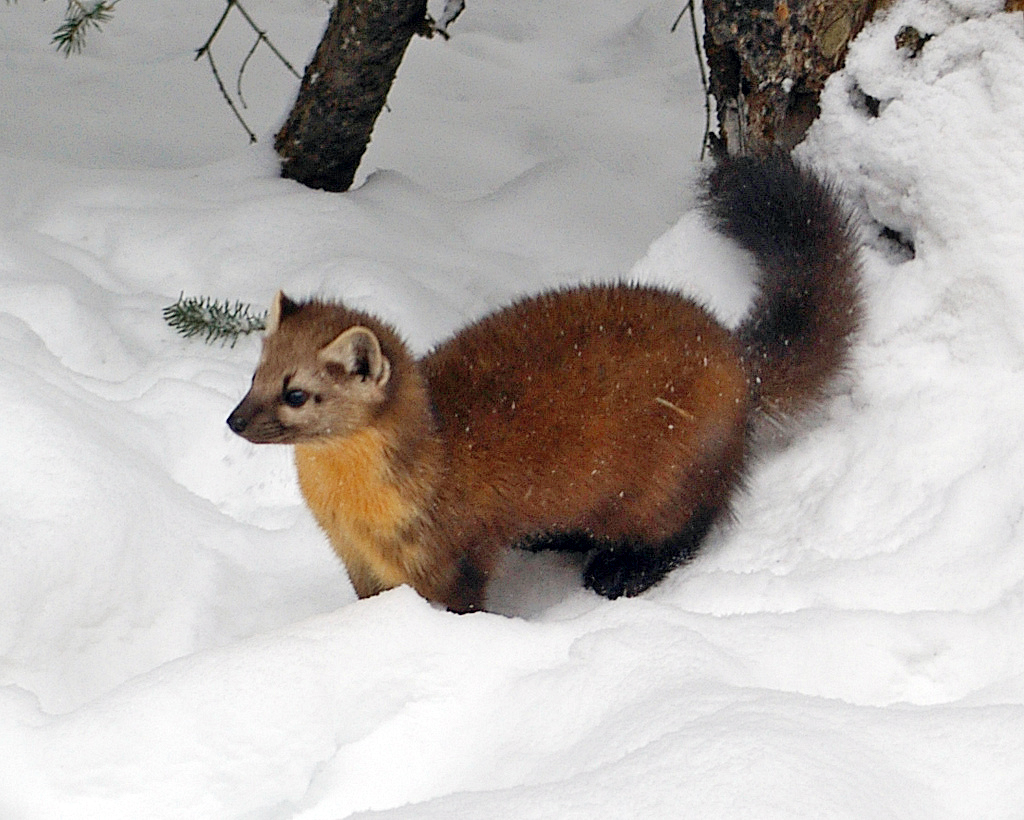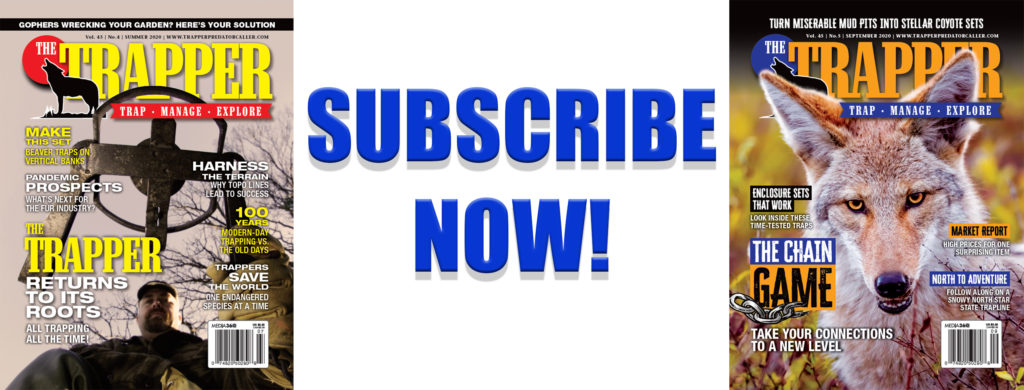November is prime time for harvest — and this is what everyone reading this column should focus on at the moment! For most outdoorsmen and women, November flies by. November is the prime month for almost everything outdoors — trapping, deer, ducks, pheasants, grouse and late-season fishing usually are all extraordinary during this month. The hardest thing to do in November is decide what to do when you have days you can escape from work or other commitments.

The author with his daughter, Veronique, on the successful beaver line. Photo credit: Serge Lariviere
In the fur world, November is when fur is starting to become prime. Mink and raccoon leather turn white, fur density increases, and depending on where you live, the first snows of the year will arrive sometime this month. By November, trappers are in the action mode — and most of the planning has long been done, leaving room for execution of the plans.
My own November plans were decided and confirmed in August, and I had two full months to get my gear organized. I have also been tracking what happens in the fur world and have been forced to realize that not much has changed compared to last season. The good news is that the trend of a slow recovery upward is still there, and this is what can be expected for this fall: a very gentle but slight inching of prices upward — for most but not everything. Let us start with the good news.
Again, price increases for fishers and martens are expected to continue. Northern marten skins are bigger and darker, and thus always bring more money. This year should be no exception, so Northern trappers should be happy. Marten is often the primary money animal for Northern traplines, as they are abundant, easy to catch, easy to skin and they bring good money. This year, martens are expected to continue to rise in price, especially the better skins. I have said it before, but on a recovery market, good skins always recover faster because it is what is being used first. As the enthusiasm grows for a certain skin type, then the lesser grades start going up also. But recovery starts with the good stuff, so if you have martens, it is worth catching them when their fur is top quality — do not start too early.
Fishers will also rise in price. At the last sale at Fur Harvesters Auctions (June 2024, www.furharvesters.com), males sold for $63 and females for $52 USD, and all signs indicate that this market will open strong again, possibly taking males to near $70 and females near 60$ — prices that make you happy to see them in your traps! Fisher skins also fare much better with full quality, so again, start catching them in late November and throughout December and January for the best quality pelts and the most money.
Bobcats always sell well, and even in good years, good cats with nicely spotted bellies sell like hotcakes. The prices we get now are not as crazy as a few years ago when one pelt could bring upward of several thousand dollars, but good Western cats will likely bring close to $500 USD on average (they sold for $440 USD average at the June 2024 sale at Fur Harvesters). With cats, the region is the first and most important part — Western cats have white bellies and nice black spots, Eastern bobcats are reddish and spots are not as well defined and thus, they bring less. Quality is next — and again prime pelts bring premium. I have always said — if you catch fur when it is prime — you will be paid a lot more for the same skinning, fleshing and boarding effort.
Canada lynx, also a luxury skin, also is slowly rising in price. At the last two sales at Fur Harvesters they averaged about $140 USD — we may break the $150 USD if things go well in 2025. These skins are luxury pelts, in limited amounts, and manufacturers who want them know that the supply is limited.
In the final good news for terrestrial skins, are all of the taxidermy and wall-hanging goods. Wolves, bears, wolverines and even striped skunks will sell well. Striped skunks shocked many people last year when some skins fetched $40 USD — a great price when you think a skunk might be worth two to five raccoons. I wonder if anyone will be brave enough to target skunks on purpose and catch raccoons as incidentals?
Raccoons continue to be part of the bad news. With the war going on and on between Russia and Ukraine, the raccoon market has stalled, and there has been some action from speculators buying the very biggest and very best for almost nothing, storing them in hopes of a short-term price recovery. Raccoon skins store well in a freezer, and that market ought to recover someday — but I believe we are still two or three years out from any form of market recovery for this item. Once the war ends, the market will start a very slow recovery, only to be flooded by skins coming out of storage first, before the real benefits of recovery can be felt for fresh skins from the field. If you must trap raccoons, or you do because you love it, learn to catch them late in the season when the fur is prime. Handle them well and keep your price expectations low. Last year, the very best ‘coon averaged less than $10 USD, which means a lot of skins did not even bring $5 each. So catch less and catch late.
Foxes and coyotes will idle one more year, as well, unless we talk cross or silver foxes, which seem to always do good. The coyote market is still swamped, we know there are stored pelts, and the parka trim fashion wave has passed. Coyotes must be captured by many trappers because of deer or livestock protection exercises, so if you do, do not bother to market junk skins from early fall. Prime pays again in this case, but it does not pay much.
Beavers sold very well during the past few years because of the hatter market that used the felt for making hats. But every indication is that this market has approached saturation, and that the price may start to decline in 2025. If you can, catch prime and sell as early as you can. In declining markets, there are some big differences in price between two successive auctions and the first one is your best bet for top price. If you sell to country buyers, again sell early, as the price will likely start a descending journey in the next few years.
Otters and mink should remain fairly stable, with muskrats difficult to sell. The money in water trapping will be beaver (fur and castoreum) again this year. On dry land, martens, fishers, lynx and bobcats should be your most profitable targets.




